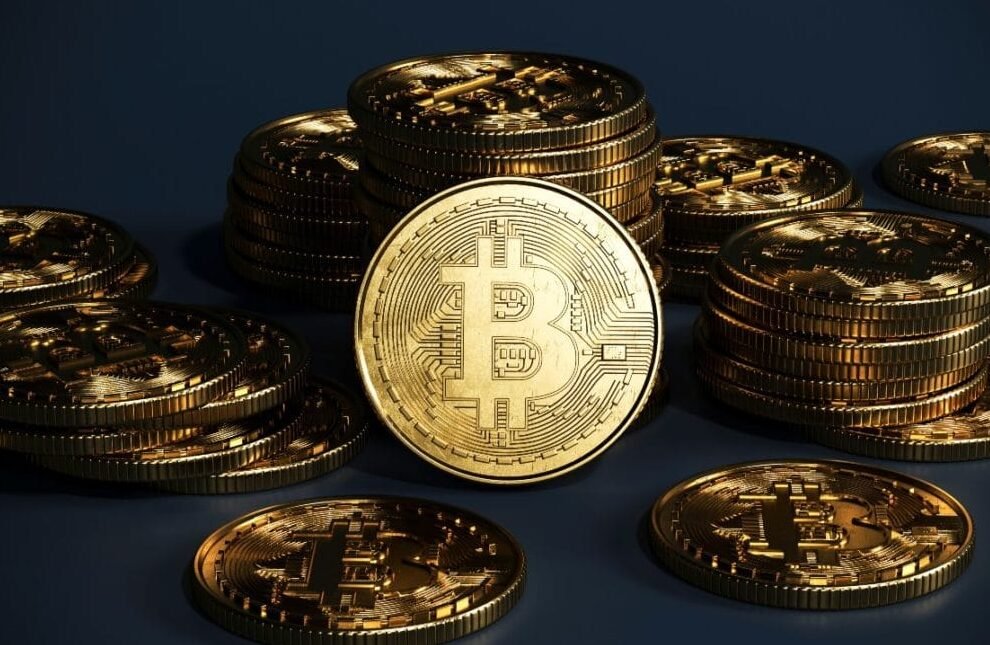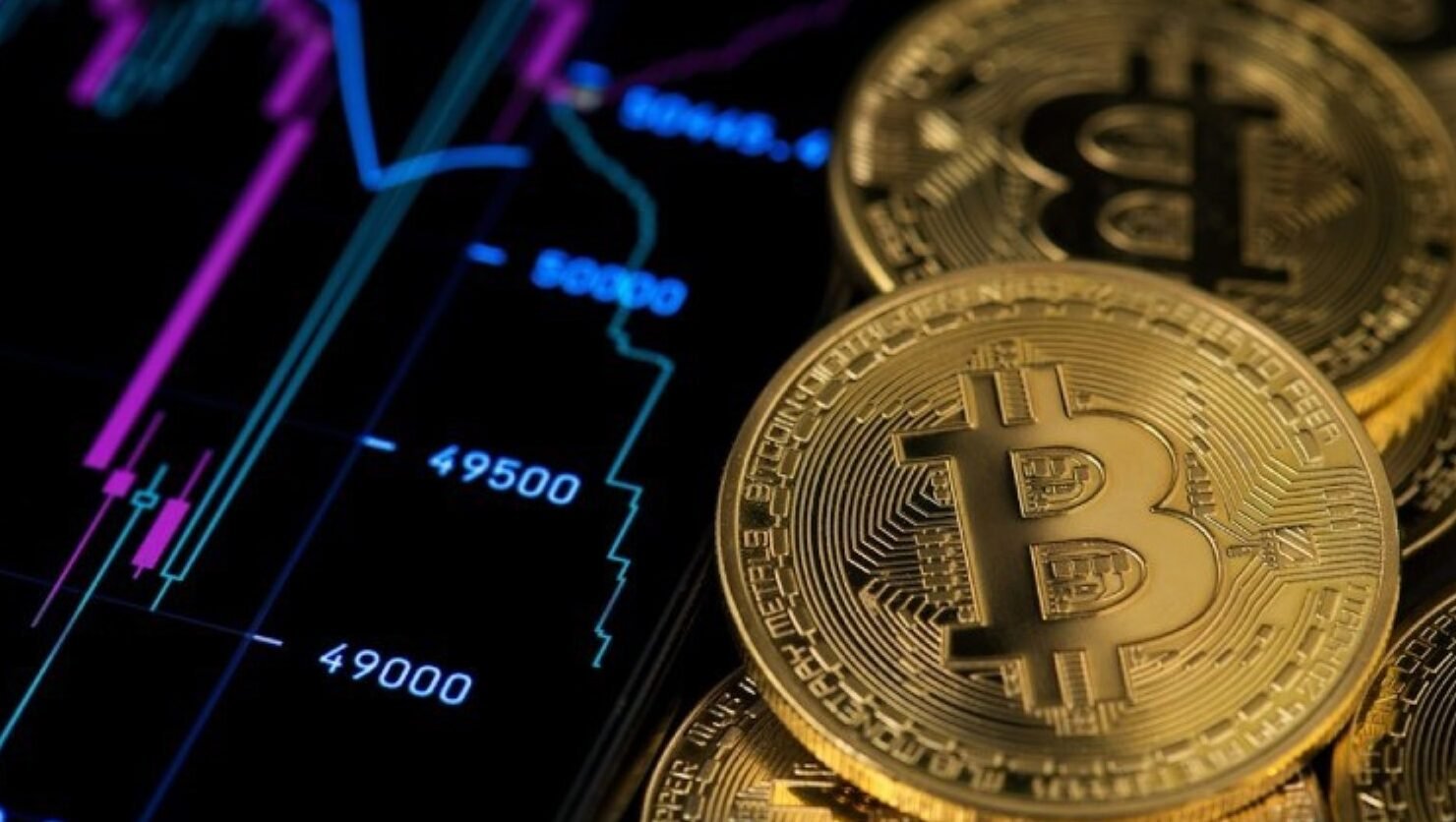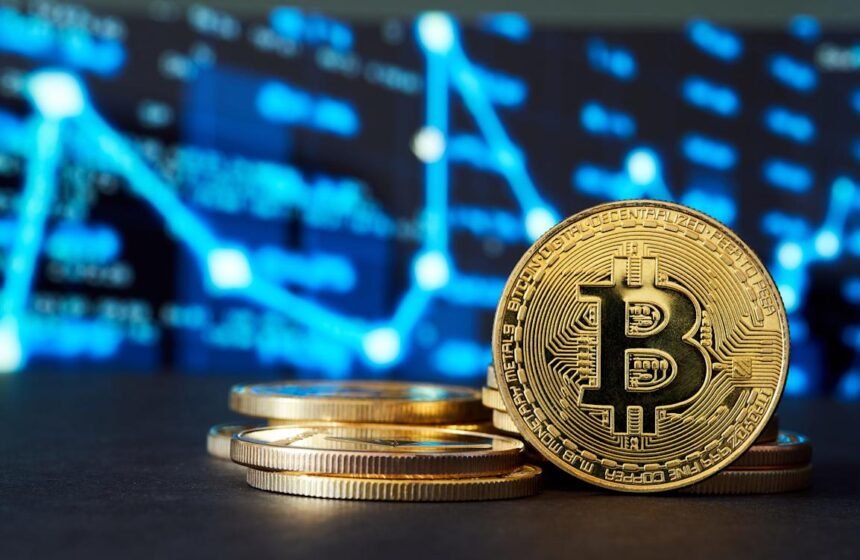Bitcoin’s rise as a safe haven: While conventional stock markets have seen a downturn and the U.S. currency continues to weaken, the Bitcoin price has seen a significant surge in recent market moves. As they try to pinpoint the elements causing the changing dynamics of world financial markets, Bitcoin’s rise as a safe haven Investors and analysts have grown increasingly fascinated by this transition. In a recent CNBC Crypto World report, experts discussed how these changes might affect the direction of traditional assets and cryptocurrency.
Bitcoin as a Safe Haven
Considered as a sign of Bitcoin’s rise as a safe haven and its importance as a store of value in uncertain economic times, its current surge has coincided with a fall in stock markets. Because of its ability to defend against inflation and currency devaluation, Bitcoin has long been compared historically to “digital gold.” Unlike the gloomy trend shown in the stock market, the world’s biggest cryptocurrency by market capitalization has lately been on an increasing trajectory, rising by as much as 15% in a matter of days.

Many analysts think the rise of Bitcoin reflects a general investor mood favoring assets thought to be more autonomous from conventional financial systems. Investors seeking alternatives have been driven by worries about inflation and the future of fiat currencies as central banks all around continue their policies of low-interest rates and huge monetary stimulation. In this scenario, Bitcoin’s fixed quantity and distributed character have been considered appealing.
Bitcoin vs Dollar
Concurrent with Bitcoin’s rise has been the decline in value of the US dollar. The dollar has begun to display fragility after months of stability against other world currencies. Among the factors contributing to this fall are the slowing of American economic development and predictions of sustained low interest rates in the market. Global events, including geopolitical uncertainty and supply chain disruptions, have further strained the dollar’s strength.
Since investors seek assets that are free from the vagaries of government policy or central bank intervention, the devaluation of the dollar has made Bitcoin more appealing. The finite supply of Bitcoin and its decentralized network stand in sharp contrast to fiat money, which central banks can produce in unlimited quantities. Bitcoin’s price has surged as the dollar depreciates, therefore supporting the theory that cryptocurrencies could provide a defense against the volatility of conventional financial institutions.
Market Decline Insights
Notable losses in major indices like the S&P 500 and Dow Jones have lately caused the stock market to likewise be unstable. Rising worries about business profitability, inflation, and the more general economic recovery following the epidemic are causing investors considerable difficulty. Many economists predict a slowing down in economic growth, which would have additional impacts on stock valuations.
Investor caution is partially responsible for the stock market drop as worries about inflationary pressures, supply chain issues, and changing monetary policies grow. The Federal Reserve’s possible decision to cut interest rates has made bonds and other fixed-income assets more attractive since it has caused a change away from riskier investments, such as stocks. This rush to safer assets has benefited Bitcoin; many consider it a non-correlated asset that might provide diversity in an unstable market.
Institutional Bitcoin Adoption
One important factor in Bitcoin’s climb has been institutional investors’ increasing curiosity. Prominent asset managers, hedge funds, and even publicly traded companies are thinking of Bitcoin as a credible investment nowadays. The growing involvement of these big businesses has given the asset class credibility and helped stabilize the Bitcoin price.
To show their belief in the long-term worth of Bitcoin, companies including Tesla, MicroStrategy, and Square have all made substantial purchases of the cryptocurrency Moreover, Bitcoin Market futures and exchange-traded funds (ETFs) are becoming more and more popular as they allow institutional investors to access Bitcoin without physically owning the coin. Because of its layer of security resulting from growing institutional interest, Bitcoin’s volatility has dropped relative to previous years.
Bitcoin Regulatory Challenges
Notwithstanding its recent rise, Bitcoin still causes major legal challenges. Governments all around are debating how to control cryptocurrencies; some also propose tougher rules for mining, trading, and storage of digital assets. While futures-based ETFs have been allowed to trade, the Securities and Exchange Commission (SEC) in the United States has not yet authorized a spot Bitcoin ETF. This regulatory uncertainty has some investors cautious since they think tighter rules will impede the growth of the industry.

For Bitcoin, the prospect of future regulatory certainties shows promise. Early on, lack of governance led to notable volatility and unpredictability, but better norms could motivate even more institutional involvement. As Bitcoin is becoming more and more regarded as a legitimate asset class, a more ordered legislative framework could also serve to promote general use of the cryptocurrency.
Final thoughts
Given its rising importance to world financial markets, Bitcoin’s future appears to be safer. The supposed value of institutional investment as an inflation hedge, combined with the devaluation of the US dollar completely, could lead to even more price increases for cryptocurrencies. However, Bitcoin remains a highly speculative asset, and one should not underestimate its volatility.
The larger economic scene—including stock market performance, interest rates, and the value of the U.S. dollar—will still affect the price movements of Bitcoin. Though Bitcoin’s ascent in the face of a stock market collapse and dollar weakening is noteworthy, it is yet unknown if it will be able to maintain its growing trajectory over the long run.
For now, though, the coin’s climb makes a compelling case for its legitimacy as a real, varied investment portfolio. As the status of the international economy develops, investors will be closely tracking whether this trend marks a passing phase or the beginning of a more permanent change in the economic climate.









